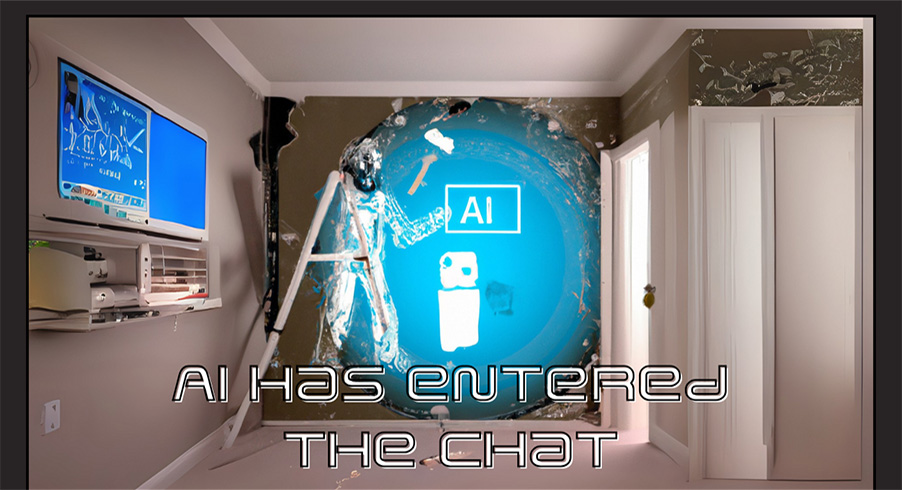I recall waiting in line for the first iPhone release at Easton and family members rolling their eyes with my new purchase and how no one needed that. Fast forward a bit and now artificial intelligence is used daily. You may not necessarily believe you are using it, but your life is being impacted by it. It’s everywhere – including the remodeling industry. I asked ChatGPT to provide me with 4 pros and cons of Artificial Intelligence in the residential remodeling industry (of course ChatGPT offered to write my blog – I declined.)
Faster & Smarter Design Planning
“AI-powered design tools can generate layout options, 3D renderings and mood boards instantly – speeding up the design phase and helping clients visualize outcomes before committing.”
Yes, this is true. The basis is there but certainly lacking. AI does not use industry standards, at least in the software I have seen offered. AI does not know how a space would really feel if it was 32 inches vs 40 inches like a human does. So while I agree with faster, I have not seen smarter. I also would caution to watch the generated mood boards, as many seem to provide things that aesthetically look nice, but look closer and it does not seem to be aware of usage – think kitchen sink faucet on a bathtub and similar. It will learn, I have no doubt about that.
Better Cost Estimation & Project Forecasting
“AI can analyze historical project data, material costs, and labor trends to deliver more accurate bids, helping remodelers avoid under quoting or delays.”
True. I believe all software we use currently has AI capabilities. We have some programs we trust this on, and others we do not. The margin of error is within reason for certain aspects, but definitely not others. AI can do the math, but not the planning required for many of the obstacles in our industry. I can definitely see new construction utilizing this, however.
Enhanced Client Communication
“AI chatbots and CRM tools help remodeling companies manage leads, answer FAQs and automate scheduling — improving response times and client satisfaction.”
True. We will be introducing a new agent on this very website soon that we are quite excited about. Chances are if you are reading this, you are informed beyond the average person when it comes to remodeling. Our agent will present to clients what can be done with their chosen budget allowing them to decide whether or not they would like to pursue talking with one of our team members about their project.
Energy Efficiency & Smart Home Integration
“AI-driven recommendations for insulation, lighting, HVAC and appliance upgrades help homeowners create smarter, more sustainable living spaces — often tied to tax incentives or rebates.”
Well, I learned something today, and will explore these claims! Maybe I’ll even write a blog about it (or elect to have AI write the blog).
4 Challenges or Negatives of AI in the Residential Remodeling Industry
1 – Loss of Personal Touch
“Over Reliance on AI tools in client communication or design may feel impersonal, especially in an industry where trust and custom service are key differentiators.”
Agreed. We utilize GuildQuality and Google for client reviews. Both companies offer AI responses to the reviews. They are incredibly impersonal and responding to reviews is a deeply personal matter that we care about here. Heck, I have spent 20 minutes now formulating this exact blog that AI could have written in 2 seconds because we care about the personal touch too much.
2 – Inaccurate or Generic Design Suggestions
“AI-generated design outputs may overlook regional styles, code requirements, or client-specific needs – requiring manual correction and experienced oversight.”
I just chuckled, see my response to 1 and 2 of the “pros” AI in our industry. It’s almost as if it knew what I was going to say…
3 – Job Displacement in Design & Estimating Roles
“AI tools are beginning to reduce the need for certain roles (e.g., drafters, junior estimators), which could shrink opportunities for entry-level professionals.”
I also agree. When AI really first was accessible to the masses, our team took a look at how it would impact our industry. Estimating will be the first to go once it learns how to properly plan for the unknown aspects of our industry – contingencies. Augmented Reality was the first example we saw in the design industry. The apps that incorporated tech like “see this ____ in your space”. That is standard now. Interior decorators will likely see AI coming for their jobs as apps continue to progress. Again, the human element is imperative in this industry for certain aspects – especially production itself.
4 – Data Privacy & Cybersecurity Risks
“With remodeling firms increasingly adopting cloud-based AI systems for estimates, blueprints, and client info, the risk of data breaches or compliance issues grows – especially for smaller businesses without strong IT infrastructure.”
This is a major concern for our team, as with likely the majority of our local industry. We take all precautions we can when it comes to fraud and hacking. Vetting programs we utilize and partner with is imperative to us, because of this very topic.
Having written all of this I will now utilize AI to run spell check. At the end of the day – our team helped build ValEquity Construction into what it is today. Our clients refer us by name to their friends and family – not that chatbot they used to consult with on a paint color for the accent wall. Figuring out how to embrace and implement AI in our industry has been interesting but we feel we can coexist and flourish. What are your thoughts on AI? Let us know!





